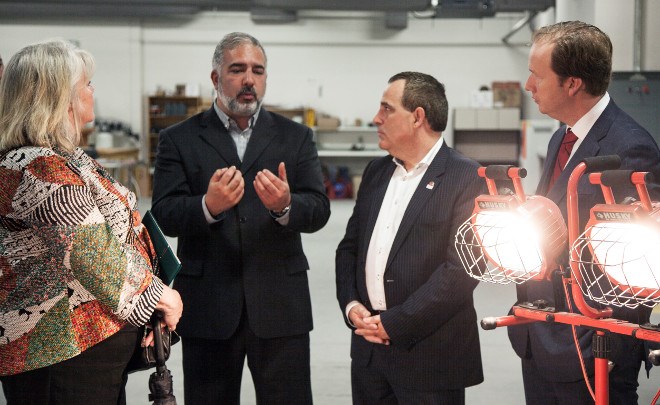The future is looking more secure for several innovation projects at Cambrian College in Sudbury with a large grant coming their way.
Cambrian Innovates, the applied research division at the college, and three mining industry partners will benefit from a $2.1-million grant aimed at supporting a five-year Mine Environmental Stewardship Initiative.
The grant is coming from the federal government’s National Sciences and Engineering Research Council of Canada (NSERC) College and Community Innovation (CCI) program. The funds were secured through an Innovation Enhancement grant that will support a five-year Mine Environmental Stewardship Initiative.
The grant will be applied to research projects that will be carried out to identify or test practical solutions to issues confronted by industry partners and key clients.
Each project will engage a team of research leads, industrial partners, faculty members, student researchers and expertise from Cambrian's established research partners. It also includes partners at Laurentian University's Vale Living with Lakes Centre and its focus on research on environmental remediation, protection, and conservation. “It's a great partnership between the college and the businesses and industry partners,” said Mike Commito, Cambrian’s applied research developer.
The grant is known as an innovation enhancement grant. The application, he explained, had to be centred on a theme or investigative approach that separated them from other colleges’ applications.
Cambrian’s was the Mine Environment Stewardship Initiative. It focused specifically on challenges confronted by mining, including remediation. They had to also name preliminary partners who they would be working with. Now they will be going back to their partners that are dealing with these specific problems, as well as increase the scope of their partners as the grant gains momentum.
One he did speak to is the ongoing cold-adapted microbes project currently being conducted by the Vale Living with Lakes Centre and includes Dr. Nadia Mykytczuk, a Northern Heritage Fund Heritage Fund Corporation Industrial Research Chair in biomining, bioremediation and science communication. The project, he said, is looking into using biological means to either lessen the impact or recover metals from tailings ponds and waste rock.
For that specific research, he explained Mykytczuk would be working with the team at Cambrian College to help her design the implementation plan. After that, they would look for an industry partner, who would look to commercialize the plan and sign a deal with the college.
“The key for us when we do applied research at Cambrian College is we find an industry partner that will reap the benefits of those projects in order to commercialize it further,” he said.
“Companies come to Cambrian to lessen the risk to their bottom lines. Cambrian students get to work on the projects and get credit for the innovation, plus they get experience. Employers often rate our graduates very high because many of them have already had work experience on the cutting edge of technology. They are way ahead of others.”
He said interest in partnering with post-secondary institutions and the business community over applied research has been on the rise since around 2010. At Cambrian, they do small projects, offering to do research and development an industry may not afford to be able to do in-house due to financial constraints. They can come to Cambrian and lower their risk by having the college apply for grants on their behalf, then provide students who will work on those projects and use that work experience when they graduate.
“As one of nine colleges in Canada to receive a Community College Innovation grant, this investment demonstrates the strength of Cambrian’s partnerships and the depth of our expertise,” said Bill Best, president of Cambrian College in a release. “This investment will pay dividends for years to come through research outcomes and by building our innovation capacity and capital.”




